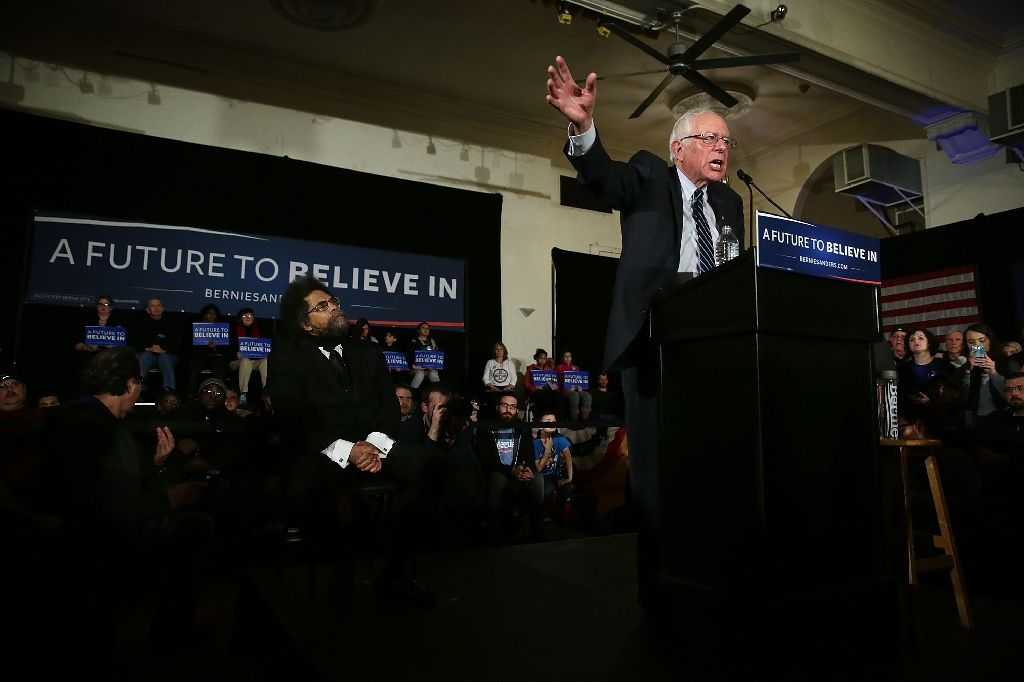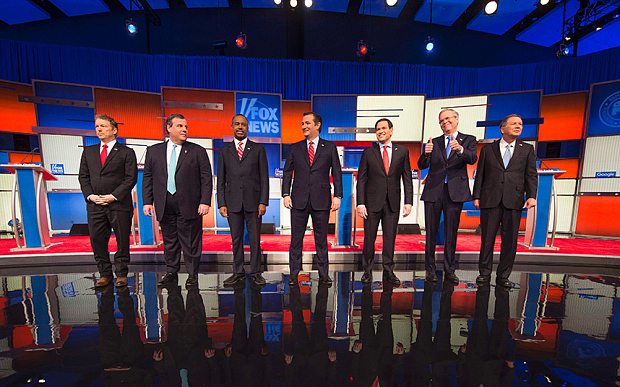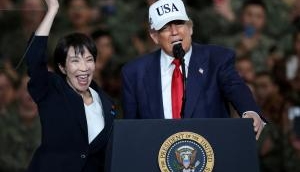
- Hillary\'s \'Obama successor\' stance, Bernie\'s \'Anti-establishment\' stance or Donald\'s \'lambasting rhetoric\'. Only Iowa Caucus can throw light on who managed to connect with voters better and which stance was accepted by Americans.
- Iowa Caucus is the first step to selecting candidates for US presidential elections. Both Democrats and Republicans follow different modules to conduct the voting process, which is transparent and direct.
Iowa Caucus has been making news for the past few weeks as the stepping stone that kickstarts 2016 US Presidential elections with much gusto. All primaries - Marco Rubio, Ted Cruz, Bernie Sanders, Hillary Clinton and Donald Trump have great expectations from Iowa Caucus that determines the presidential candidates for US elections.
Why is it noteworthy?

AFP
The Iowa Caucus is noteworthy for the amount of media attention it has managed to consistently receive during US presidential election years. Since 1972, the Iowa caucuses have been the first major electoral event of the nominating process for President of the United States.
The process?

AFP
Caucus meetings for Iowa Democrats and Republicans begin at 7 pm Central Time, or 8 pm for the East Coast, as reported by CNN.
Also, Democrats and Republicans do not run their caucuses the same way, hence, the final names of candidates from each side will be revealed with a definite time lag as democrats have an intricate process of voting.
Caucus votings are complicated and controversial because the process is completely transparent. There are no secret ballots involved. So, whichever candidate you back may win of fail, but you have to live with that decision under public glare for four years till next elections. Quite tricky.
Republicans: Their Caucus meetings begin with the Pledge of Allegiance. Post this, activists get straight to the main event -- selecting their presidential candidates in a binding vote.
Each campaign gets the chance to have a representative make a final pitch to any wavering voters before a secret ballot takes place. Some caucus sites might use a printed ballot paper and others just go with a candidate's name on a scrap of paper.
Raw totals of votes are tallied by local party officials and sent to Iowa GOP headquarters, where a running count is kept.
Democrats: As stated earlier, they have a complicated process of voting and backing candidates.
As soon as the meetings open, attendees must declare a preference for any candidate.
Backers of each presidential hopeful have to stake out positions around the room. People who still can't decide, join a group known as "uncommitted."
In order to be considered viable, any group must clear a certain threshold limit which is around 15% of the entire caucus turnout in each precinct.
Voters aren't voting for a candidate directly. Instead, Republicans and Democrats will vote to send delegates on their preferred candidate's behalf to the national conventions, according to the Daily Dot.
To understand the process, watch the Vox video below:
If you still don't understand how the Iowa Caucus works, the Daily Dot offers a hypothetical situation:
If there are 40 Clinton supporters, 30 Sanders supporters, and 10 O'Malley supporters at your caucus site, the 10 O'Malley supporters that fall below the night's threshold will have to disband and join either one of the two other groups of supporters.
If you're a Republican, you will voice your preference for a presidential nominee on a written ballot. Results are then tabulated and sent to each party and reported to the media.
Republicans in the fray:

Ted Cruz: AFP
Jeb Bush
Ben Carson
Chris Christie
Ted Cruz
Carly Fiorina
John Kasich
Mike Huckabee
Rand Paul
Marco Rubio
Rick Santorum
Donald Trump
The actual fight: Trump versus Ted Cruz versus Marco Rubio
Democrats in the fray:
Hillary Clinton
Bernie Sanders
Martin O'Malley
The actual fight: Hillary Clinton versus Bernie Sanders
Quick facts:

AFP
- Usually, voters refrain from turning up for the voting process due to a variety of factors. This year, the impending snowstorm may pull in more people to vote or spoil the turnout count. Mostly it has been registered that Republicans and Democrats who turn up in large numbers get to select their presidential candidate.
- In 2004, there were half a million registered Democrats in Iowa, but only 124,000 or so showed up on caucus night, according to the Iowa Caucus Project at Drake University.
- In 2012, there were 614,000 registered Hawkeye Republicans but only 121,000 made it out on caucus night.
- The exception to the rule was in 2008 during the race between Clinton and Barack Obama, who managed to pull in 239,872 Democrats for the voting process.
Hillary Clinton, Bernie Sanders and Donald Trump aim to achieve the same feat, this year. The race has just begun!
First published: 30 January 2016, 3:33 IST







![BJP's Kapil Mishra recreates Shankar Mahadevan’s ‘Breathless’ song to highlight Delhi pollution [WATCH] BJP's Kapil Mishra recreates Shankar Mahadevan’s ‘Breathless’ song to highlight Delhi pollution [WATCH]](https://images.catchnews.com/upload/2022/11/03/kapil-mishra_240884_300x172.png)

![Anupam Kher shares pictures of his toned body on 67th birthday [MUST SEE] Anupam Kher shares pictures of his toned body on 67th birthday [MUST SEE]](https://images.catchnews.com/upload/2022/03/07/Anupam_kher_231145_300x172.jpg)






